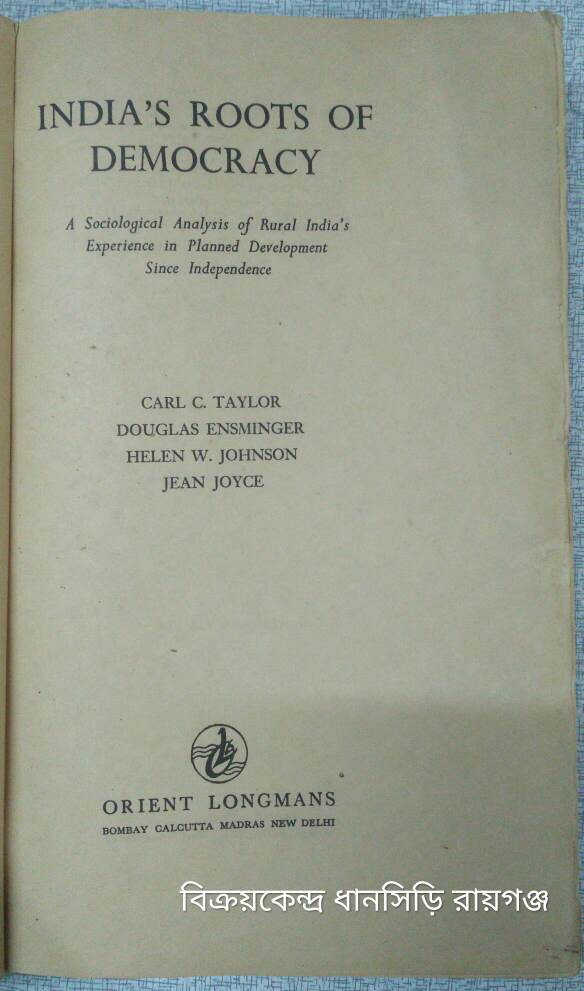India’s Roots of Democracy is written for the planners and directors of development programmes of newly-developing countries, as well as those of assisting countries, who may- find profit in an objective but critical analysis of the first decade of experience of the most giant, planned rural development pro- gramme in the free world; for the numerous pcrsons everywhere who want to learn about what India is attempting to do, and why; and for the considerable and increasing number of social scientist who dedicate themselves to the task of understanding the purposes and the problems of the economic, social, and political rical development of newly-developing countries.Finally, and with great feeling, this hook is written for(and dedicated to) that wider spectrum of the Indian people-her planners, political leaders, teachers and scientists, administrators and field workers-upon whom have fallen the burdens of raising a new nation from its well-established roots.It is our hope to provide these people with the vital one-step-back objective view of their progress and methods in an effort to understand the process of change, to appreciate their vast progress to date,and to provide encouragement for these dedicated people to stand by their commitments and continue in their unassailable faith in the capacity of India’s people to overcome the burdens of disease, ignorance, and poverry. For it is these commitments alone which will bear the fruit of a half-billion self-reliant citizens capable of making wise decisions and contributing their full share to the development of the new India. The first eight chapters of this book deseribe the sitting with which Indian planned develnpmcnt began, that is, the major conditioning factors and identifiable situations, inherited from the past which would inevitably condition the processes of planned change.The next te chapters discuss the various rural development programmes and give the author’s critical assessment of the trials, errors,and successes of those programmes.




